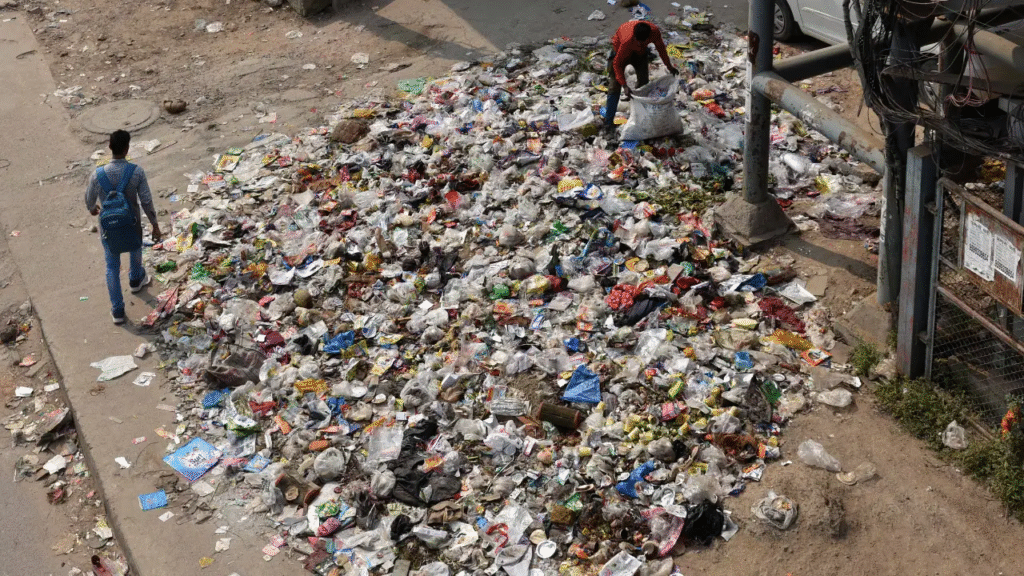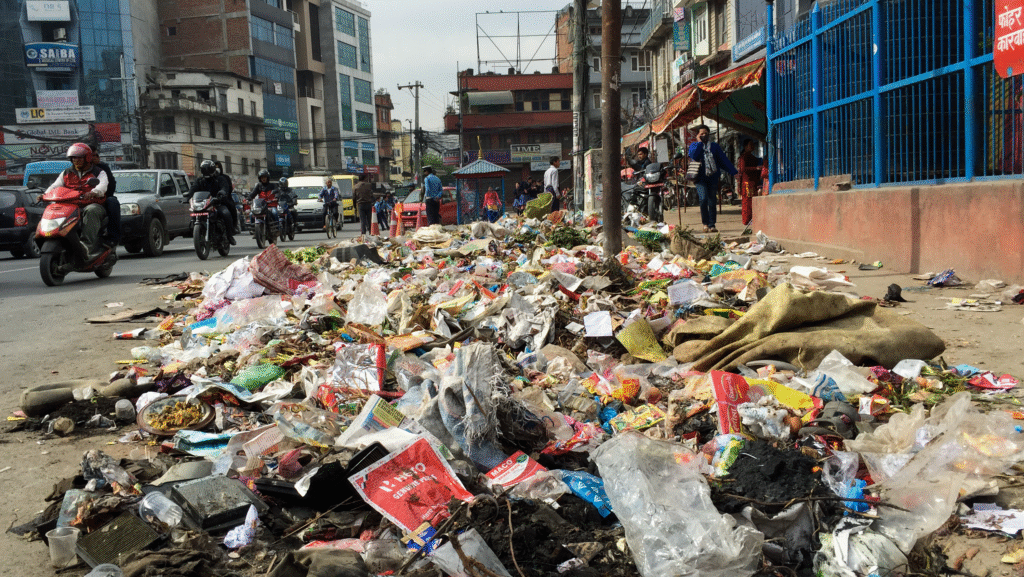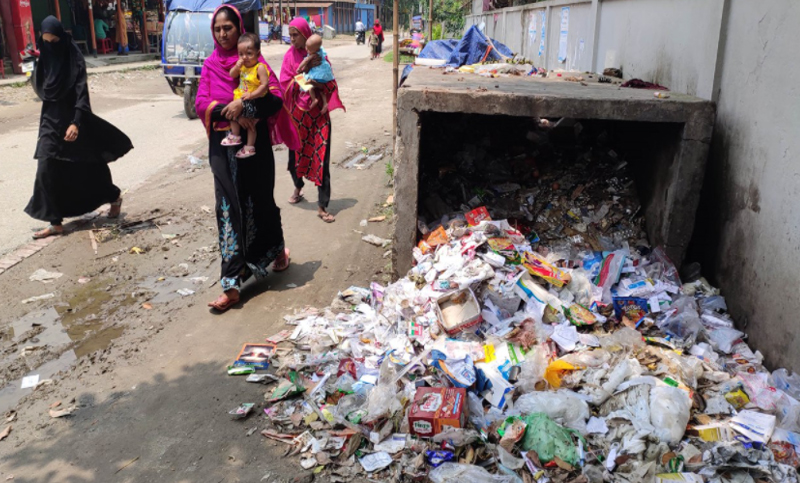
Picture credit: The Business Standard
Bangladesh is on the verge of destruction. Every day, 60-70 tonnes of waste are being dumped in the river, Nala-Khalbil and roads. The whole of Bangladesh has become a garbage dump due to the dumping of household waste and shop waste everywhere. The problem of waste management is constantly increasing due to overpopulation and unplanned urbanisation. The drainage system was provided for the convenience of the citizens on the side of the road, but if rain comes, the drain becomes a sea due to the repairs every day, but there was no benefit today from this kind of childish act from the government. Whether the city corporation, the government, or the stockholder organisations carry out various activities, it has been considered a simple, easy way out. But no one cares about that problem. Everyone is playing a role of irresponsibility.
'Rafiq sahib, who is engaged in cleaning garbage in Cumilla city. He spent his life cleaning garbage for 50 years. He is currently suffering from various physical problems. The government did not take any safety measures for his health at that time.
Why does this problem occur?
According to the United Nations Environment Programme (UNEP), more than two billion tones of municipal solid waste are generated every year. Out of this 45 percent (waste management), waste is not managed.
About 4 billion people around the world are living outside of regulated waste management facilities, and relatively poor populations are most affected by this waste.
The government does not have any specific framework for waste management. The waste is being transported from one place to another, but it is destroying the land of thousands of people. According to the Bangladesh Bureau of Statistics, 20 hectares of arable land are being destroyed due to solid waste in Annut compared to the city.

What are the diseases caused by waste?
Bangladesh is currently generating 150 kilograms of waste per capita per year and a total of 22.4 million tonnes of waste, which is constantly increasing. Environmental experts fear that by 2025, 220 kilograms of waste per capita and the total amount of waste will be 47 thousand 64 tonnes, which will be a threat to the environment. Waste is of different types. For example: solid, liquid, gaseous. But the amount of solid waste in Bangladesh is high. Solid waste is generally used to refer to items of human use that become unusable or unnecessary.
According to the World Health Organisation (WHO), the impact of waste materials can lead to diseases such as asthma, birth defects, cancer, cardiovascular disease, childhood cancer, COPD, infectious diseases, low birth weight, and preterm birth. Also, water and food contamination by flies causes dysentery, diarrhoea, and amoebic dysentery. Infectious diseases can spread such diseases as plague, salmonellosis, trichinosis, endemic typhus, etc. The clogging of drains and gullies with solid waste facilitates the breeding of mosquitoes and the spread of malaria and dengue.
The World Bank, citing 2015 figures, said the level of pollution in urban areas has reached alarming levels, saying that 80,000 people died in different cities of Bangladesh in 2015 due to pollution.
In Bangladesh, 28% of the deaths each year are caused by environmental pollution. But the global average of such deaths is only 16 percent.
How many people are currently suffering from health problems caused by the environment?
According to Prothom Alo, more than 272,000 people died prematurely in Bangladesh in 2019 due to four types of environmental pollution, including air pollution. 55% of these deaths are due to air pollution. In addition, pollution caused an economic loss equivalent to 17.6 percent of the country's gross domestic product (GDP) that year.
According to the Bangladesh Country Environment Analysis (CEA), air pollution, unsafe water, poor sanitation and hygiene, and lead pollution cause more than 272,000 premature deaths annually. As a result, 522 million days are spent in sickness every year. Both indoor and outdoor air pollution are harmful to human health.
According to a World Bank report, Bangladesh is facing alarming levels of pollution and environmental health risks. It affects the poor, children under the age of five, the elderly and women.
According to the World Health Organisation (WHO), more than 10 million people worldwide suffer from environmental health problems.

Will the problem of waste be solved?
Bangladesh is moving towards risk as much as it is moving towards developing countries. Waste is constantly being dumped at an uncontrolled rate in a potential state structure.
Although the Department of Environment, City Corporation, and Municipalities are working hand in hand, the steps of NGO organisations are bringing some relief to the people. Directorate of Public Interest Engineering to solve the problem of waste.
Integrated Waste Management
Integrated waste management activities are being carried out across the city.
Besides, the government is working by identifying the problem of waste in the National Environmental Policy 2018. The 3R principles (reduce, reuse, recycle, and convert waste to wealth) are being seriously presented. Although the government banned polythene in 2002, polythene is still in existence today, which is a sign of unrest. In 2020, the Department of Environment announced a ban on the use of single-use plastic, but it still continues.
To find a way out, the government of Bangladesh will have to suppress the waste management problem with a strong hand. Otherwise, it will become a permanent problem.

